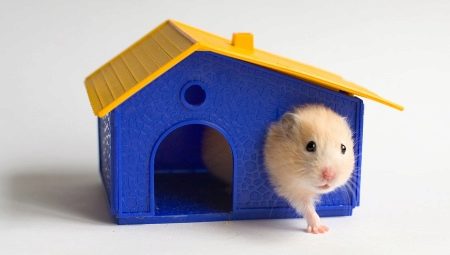The hamster is considered the most popular pet because it is small in size, easy to care for and able to give joy to children. Before you get this animal, you must carefully prepare a place for its habitat. The hamster’s house can be purchased either ready-made or self-made, the main thing is that it is comfortable and easy to clean.

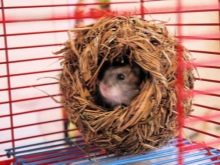
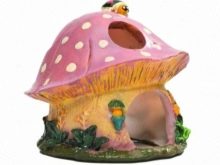
Features
In the wild, hamsters prefer to settle in small shelters (nests), choosing for this recess, mink and hollow. They provide animals with the necessary thermoregulation, comfort and safety. As for domestic animals, the arrangement of their housing completely depends on the care of the owners, who usually purchase a compact house for a hamster and supplement it with various accessories for "walks" and games.
Since hamsters are rodents, then as housing for them, it is advisable to choose wooden or plastic cages with an entrance and a removable lid.
It is not recommended to give preference to designs with windows: the pet may get stuck in them.
Besides, the house must be spacious since animals love to hide their food supplies. The main requirements for the operation of the hamster’s housing include safety, so the design in which it is planned to contain pussies should be stable and not have sharp edges at the edges.
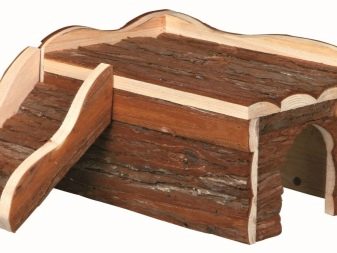
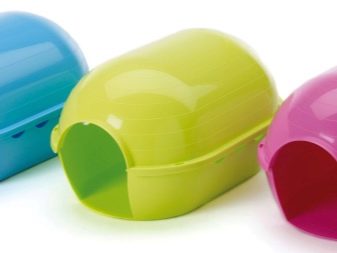
Varieties
Today, the market is represented by a chic selection of hamster houses, with each species not only distinguished by its design, but also by its size and price. Most often, pet owners prefer classic cells with a plastic bottom and trellis on top. In this case, pay attention to so that the width between the rods does not exceed 0.5 mm for the Dzungarian hamster and 10 mm for the Syrian hamster. A huge role is played by the height of the sides of the pallet, the dimensions of the structure. Basically, such cells are available in sizes of 50x30 cm and a height of up to 100 cm.
They are also very popular. plastic houses having the form of several separate chambers that are interconnected by tunnels. This design is ideal for a pet, as it resembles a natural mink. The main disadvantage of such houses is the high price, and it is difficult to clean it.
Many owners also buy for pets. shop windows or aquariums. They have the following advantages: they allow convenient observation of rodents and are inaccessible to a cat. But there are drawbacks in glass constructions: the greenhouse effect (poor ventilation), high walls, glass is quickly dirty and difficult to wash. As for the windows, they are panoramic cells, are made to order, fit perfectly into any interior, but are expensive.
Good housing for hamsters is dune. This is a transparent cage, complemented by a metal grill on top. It is easy to open, clean and does not allow the animal to spread the filler.
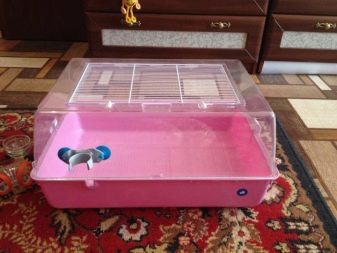
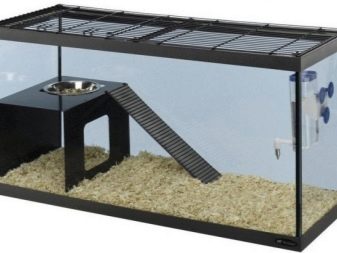
Dimensions
An important point when choosing a house for a pet is the size of the structure, which is determined depending on the dimensions of the animal. So, for the Syrian species, it should be more than for the Dzungarian. At the same time, one should not forget that a hamster can grow up and a lack of space will negatively affect his health.
The ideal dimensions for the house are 8x8x7 cm. At the same time, the design on the bottom should have indicators of at least 50x30 cm for dwarf species and 60x40 cm for Syrians.
There may be more cells, but they will take up a lot of space and create problems with cleaning. Small houses of 20x25 cm in size can be purchased for depositing young animals or in the case of mating and quarantine.
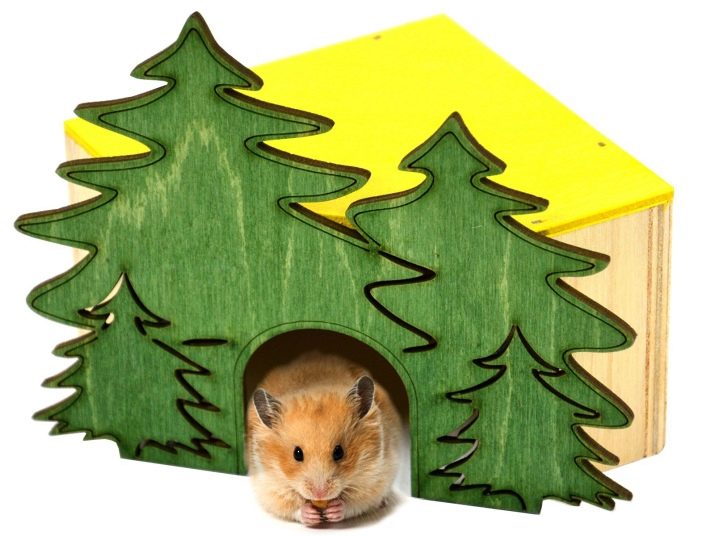
Forms
Now on sale you can find a wide variety of models of houses for hamsters, differing not only in size, but also in design, shapes. The most popular are the designs of rectangular and square shapes, decorated with bright roofs, balconies and windows. Two-story compositions with a staircase look interesting in the interior. In addition, original ceramic models in the form of vegetables and fruits are sold in stores.
Since all hamsters love to build nests, wicker houses made of oval or round vines can also be suitable for them. An unusual solution is also considered a triangular hammock house. The choice of forms depends on the personal preferences of the pet owners.
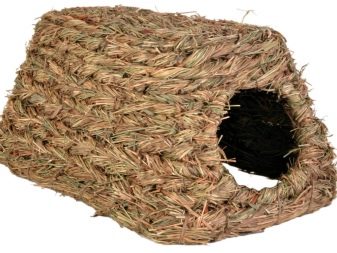
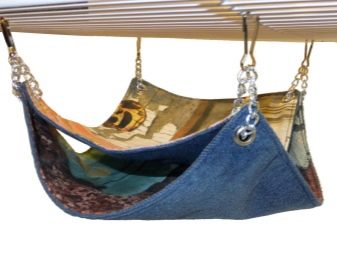
Materials
One of the main criteria when choosing a particular model of a house for a rodent is the material from which it is made. Plastic constructions are considered the most durable and reliable in operation, however, they have poor ventilation, and a hamster, trying a house "on the tooth", can swallow plastic, and then get sick. Therefore, experts recommend such houses Do not make yourself from plastic bottles, but purchase it in a finished formhaving previously verified the quality of the material.
In addition, designs come from other materials.
- Made of wood. It is a purely ecological material, with which fluffy is quite common in the wild. A wooden house is the best choice for keeping a pet. Its surface is a little rough compared to plastic and this allows the animal to quickly climb the roof along the walls. The price of such designs can be different, depending on the size.
- From ceramics. Ceramic house appeared on sale recently, but it has proved itself perfectly.It is considered safe for health (non-toxic), perfectly retains heat, but costs much more than plastic and wood models. In addition, ceramic structures may break when dropped from a height. They are available in various shapes, sizes and colors.
- From coconut. Such housing is made independently from coconut, having previously made a hole in it and drained milk. These houses are the cheapest, and everyone can make them.
- From cardboard. This house is a simple option for keeping a pet and is suitable, as a rule, for miniature species of hamsters. To build the structure requires two cardboard tubes, which remain from the rolls of kitchen towels or toilet paper.
- From plywood. This model is referred to as a self-made one and it is easy to build it for those who have previously encountered the manufacture of birdhouses. Plywood houses are one of the simplest types of housing for rodents.
If desired, hamster owners can also make original designs from a container and paper.
Despite the fact that they are much inferior to wooden and plastic houses, they are easy and quick to make with your own hands, saving the financial budget.
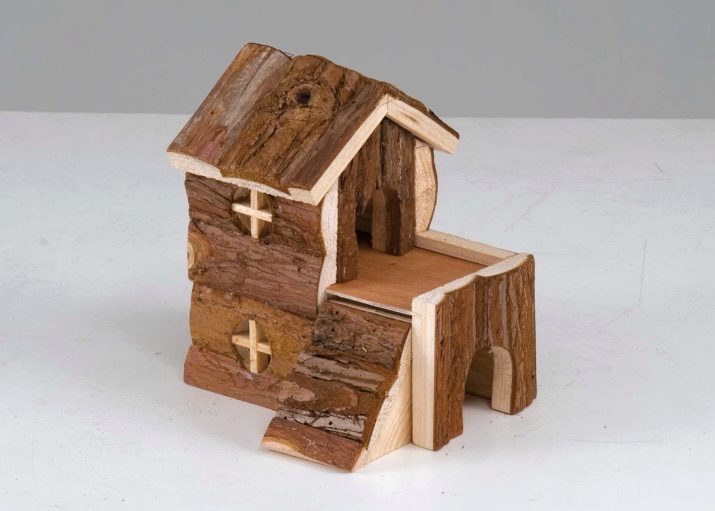

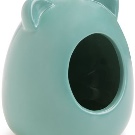
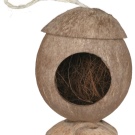
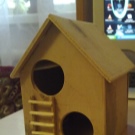
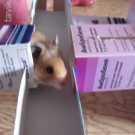
How to choose?
Before you buy a house for a hamster, it is important to take into account many nuances, since the term of its operation, the convenience of cleaning and the comfort of living of the animal will depend on this. One of the main criteria that you should pay attention to is access to ventilation, as poor air circulation negatively affects the health of the furry, and a humid environment will cause infectious diseases. In addition, the following indicators play a huge role:
- security (doors and locks must be reliable, metal - strong);
- the availability of free space;
- simplicity in cleaning;
- the ability to complete with various accessories.
It is best to buy finished designs in stores, they are characterized by high quality and original design.
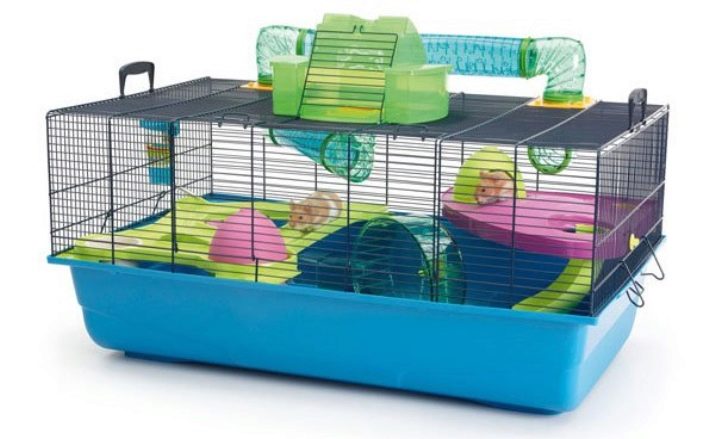
How to equip?
To diversify the life of a pet and maintain its athletic shape will help the correct arrangement of its housing with a variety of accessories, for which the running wheel is most often chosen. The tunnels are considered an interesting addition to the house, but they should have good ventilation and be spacious. In order for the pet to develop coordination of movements, special hammocks will be needed for it. In addition, the following elements must be present in the cell design:
- drinking bowl in the form of a ceramic saucer;
- capacity for feed;
- litter;
- mineral stones for grinding teeth.
Particular attention should be paid to the quality of the litter: it must be laid out of wood filler or split logs up to 6 cm thick, and cotton wool is also suitable.
At the same time, toilet paper torn into pieces can be put on the bottom of houses made of plywood and wood, it should be replaced with a new one every day during cleaning. You can also in this case, and lay patches of non-woolen fabric.
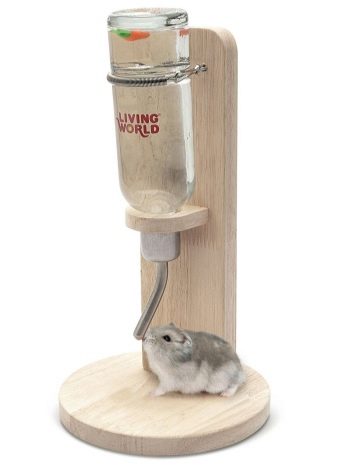

Beautiful ideas
In order for the hamster’s house to fit into the general interior of the house or apartment, it must be unusual. There are many options for this. For example, stylish housing for a pet will be obtained, assembled from a children's designer, while all the details must be tightly fastened.
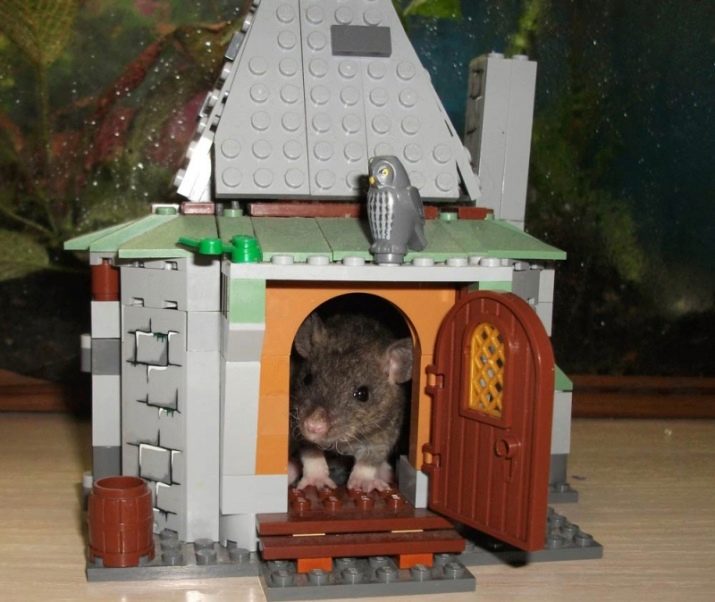
Housing made of glass jars will look no less attractive, their walls can be decorated with stylish ornaments that would correspond to the design of the room.
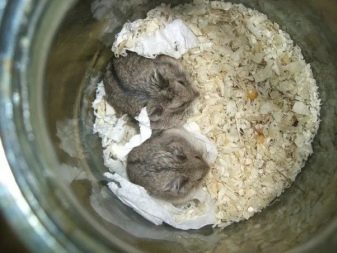

Structures in the form of wooden caves also look very beautiful. To do this, the base of the house is made of a cardboard rectangle, and the walls are glued with dry branches. If desired, you can also build a small ladder.
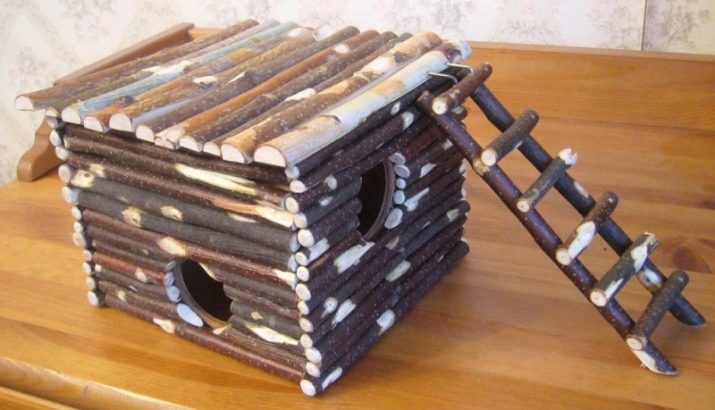
In the video below you can find other options for houses for hamsters, as well as tips for choosing.
